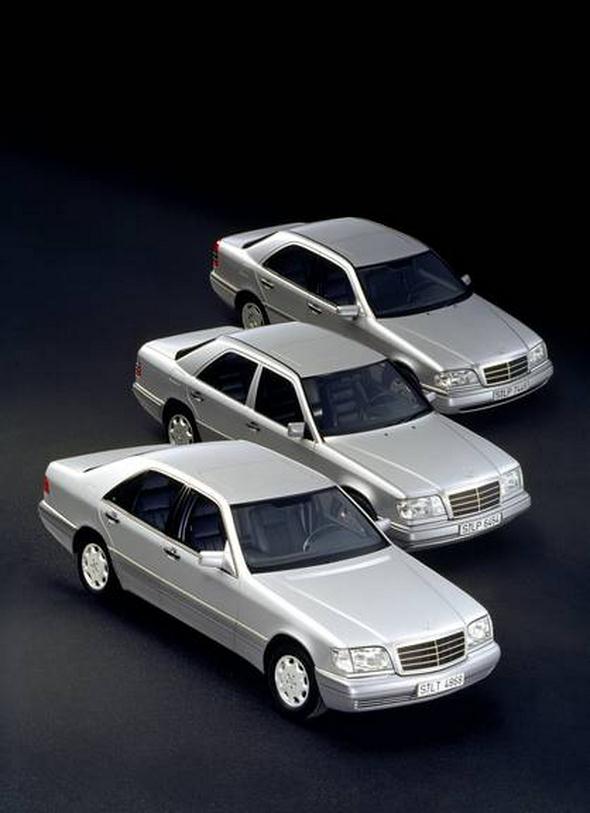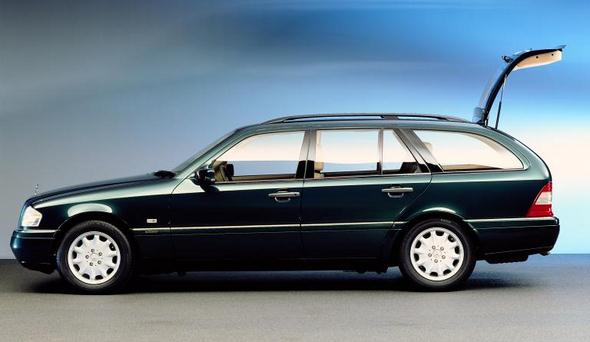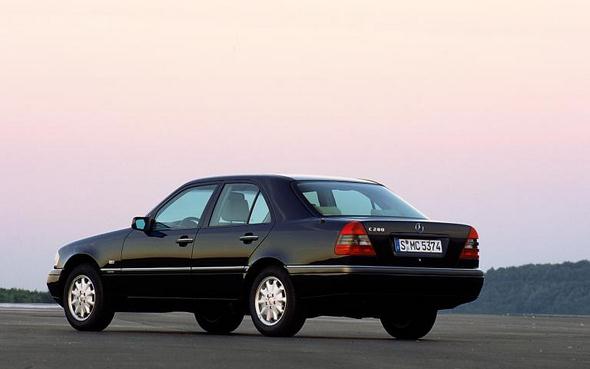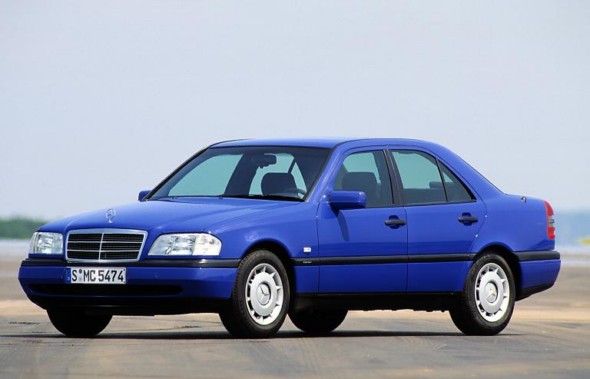Mercedes W202 C-Class 1993 – 2000


In May 1993 the second generation of the compact class was presented with the model series 202.

Analogous to the generally known designation “S-Class”, which has been used for more than two decades for the top-class range of Mercedes-Benz, the new models were united under the newly created term “C-Class”.

In this context, the type designations have been changed as well: the already known three-figure designations that are derived from the displacement are now preceded by a letter, in this case the “C” documenting the class to which the vehicle belonged.


The abbreviations “D” and “E” for Diesel respectively petrol-injection-engines disappeared without a replacement.
The C-Class sedans were the successors of the 201 series with which Daimler-Benz had been very successful in establishing itself in the market segment of the compact middle-class passenger cars.

In the almost eleven years of production nearly 1.9 million cars were manufactured in the Sindelfingen and Bremen plants.

The most important assets of the new “small” Mercedes were considerably more interior space, more active and passive safety, and more comfort with overall dimensions that had barely been changed.

With a standard equipment considerably more voluminous comprising among other things fullsize-driver’s air bag, integral side-impact protection, ALS, power-steering, 5-speed gearbox, and central locking system and with prices nearly unchanged compared with the predecessors, the new price/value-philosophy of Mercedes-Benz was demonstrated effectively.
[adsense]
A novelty represented the concept of different styling and equipment lines, in which the C-Class types were offered. Apart from the “classic version” the three variants “Esprit”, “Elegance”, and “Sport” were on offer.

In the range of products the “Esprit” corresponds to the classic version but is lowered by 25 mm and targets more the younger customers with its couloured and fresh interior.

With the “Elegance” variant not only the interior equipment is clearly more extensive, in the external appearance, too, there are some striking differences: The all-around protective moulding is matched with the coulour-tone of the painting coat, painted in contrast colour and fitted with a chrome insert like the door handles.

The wheel trims , too, are fitted with a chrome ring and the lamp units also deviate in their appearance.

The front direction-indicator lights are fitted with colourless cover glasses and the rear lamps are formed bichromatically.

The “Sport” version is lowered by 25 mm like the “Esprit” version and distinguishes itself apart from a tighter chassis tuning through the standard wide tire and light metal wheel rims in the 5-hole design.

For customers who want their C-Class car to look even more dynamic, an AMG version with lowered sports chassis, light-metal wheels in the AMG design, modified front and rear apron as well as discreet side sills is available.

In the beginning the model range of the C-Class comprised seven models, three of them with a Diesel engine and four with an petrol engine.

The range of the petrol aggregates mainly consisted of the known four-valve units having already stood the test of time with the 124 series since October 1992.

A novelty was the 1.8-liter unit that was also equipped, as a modified version of the 2.0-liter variant, with the 4-valve technology and the electronic injection system with P-motronic.
Of the Diesel engines only the 2.0-liter unit of the predecessor had been taken over.

With the newly developed 2.2-liter and 2.5-liter units OM 604 and OM 605 the 4-valve Diesel engine had its world premiere.

At the same time the 3.0-liter 6-cylinder variant OM 606 was introduced in the 124 series.

The assets of the new 4-valve aggregates were improved performance and torque with, at the same time, a reduced fuel-consumption and a considerably reduced exhaust emission.

All Diesel models were equipped with exhaust gas recirculation and oxidation catalytic converter as standard.

In September 1993 the C 36 AMG, the most powerful variant of the C-Class, was presented on the IAA in Frankfurt.

The top model of the series is driven by a 206 kW (280 hp) strong 3.6-liter 6-cylinder aggregate with 4-valve technology that was developed at AMG from the time-tested 3.2-liter engine.

The serial production started in the beginning of 1994; from this date onwards the C 200, which had not been directly available in contrast to other models of the series, was also delivered.

In September 1995, again on the IAA in Frankfurt, a revised model programme of the C-Class was presented after the 500,000th car had come off the assembly line after only 22 months of production.

An actualisation and upward revaluation was the main objective of the model’s improvement.

The “classical version”, now seen as a style of its own and therefore named “Classic”, as well as the “Esprit” version were given indicator lights with transparent covers and also bichromatic rear light clusters.

The interior of all style versions was improved and modernised. Numerous technical modifications also took place.

For example, from September 1995 all models were fitted with 195/65 R 15 tires and front tracking was increased by 6 mm.

In addition to the changes affecting all C-Class cars, two completely new models were presented at the Frankfurt Motor Show.

The C 230 Kompressor received a lot of attention, with its new 2.3-liter 4-cylinder engine using a Roots compressor for the first time for over 50 years.

The compressor gave the engine 193 hp and a much increased torque, available over a wide range of engine speed.

The strong torque is reflected by excellent acceleration and high elasticity, without any disadvantages in terms of fuel consumption or pollutant emissions.

The other new model was also equipped with a supercharged engine, although of a totally different concept.

The C 250 Turbodiesel was the first turbodiesel car with 4-valve technology and intercooling.

The new engine, developed from the old 4-cylinder with natural aspiration, is one of the most powerful Diesel engines in its class, with an output of 150 hp and a maximum torque of 280 Nm available from 1,800 rpm.

It also has the advantages of low fuel consumption and low emissions of pollutants.

With the appearance of the new turbodiesel the C 200 Diesel and C 250 Diesel were no longer sold on the domestic market.

In August 1996 further innovations took place in the C-Class; the C 220 was replaced by the C 230.

Its 2.3-liter engine had been developed from the 2.2-liter and had been used in the E-Class for over a year.

At the same time the other 4-cylinder petrol engines were modified. The 1.8- and 2-liter engines got a new fuel injection system and also the adjustable inlet camshaft.

At the same time the new electronically controlled 5-speed automatic transmission became available for the C-Class.

This new generation of transmission reduced fuel consumption, improved comfort in terms of both engine noise and of the number and quality of gear shifts, improved reliability and expected lifetime and reduced maintenance costs.

In June 1997 the C-Class received a facelift, four years after its launch and after more than a million units had been sold.

















































